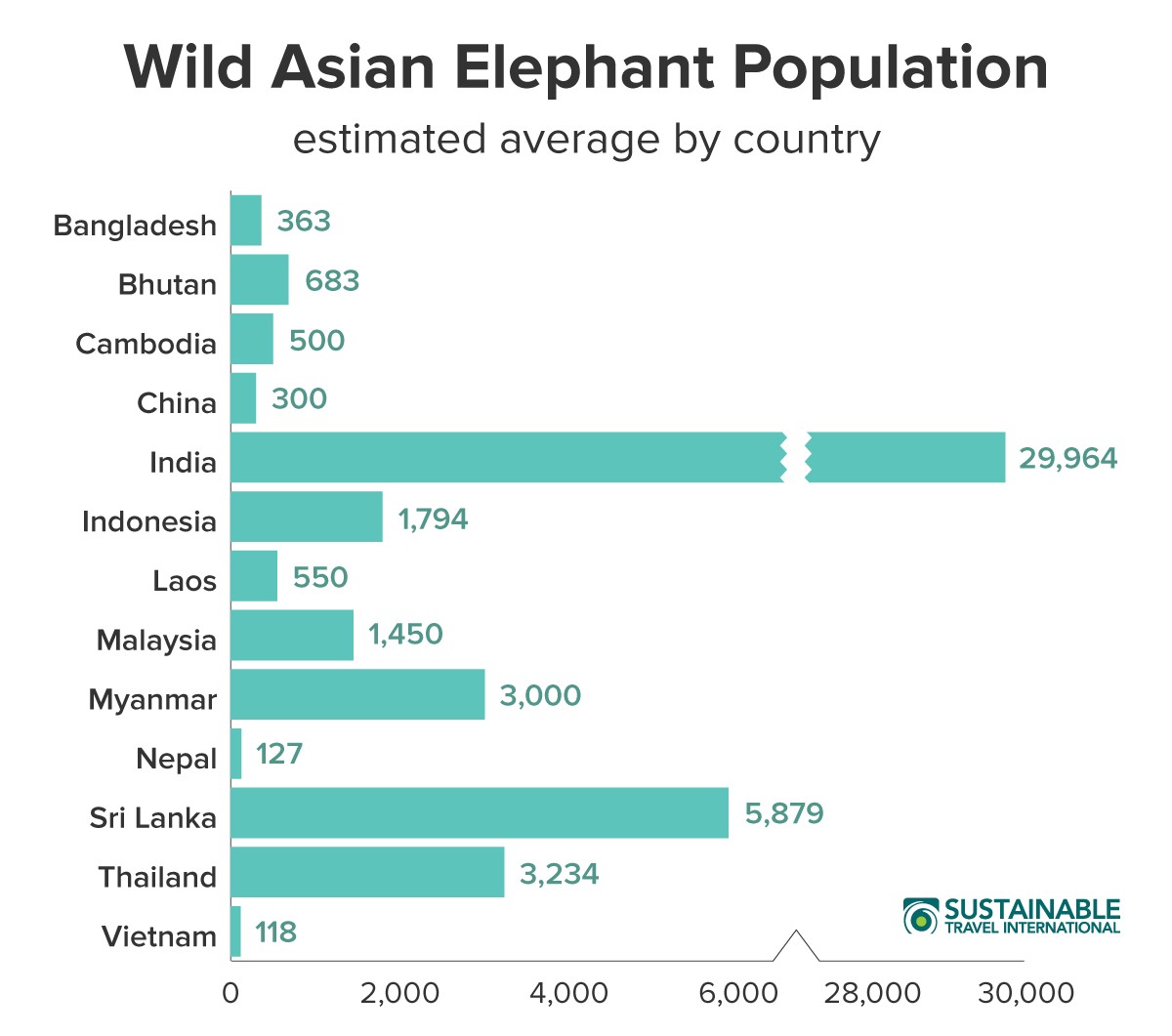Asian elephants, majestic creatures symbolizing wisdom and power, are facing a dire situation: they are endangered. Their populations have plummeted drastically, raising concerns about their survival. This article delves into the primary reasons behind the endangerment of Asian elephants, exploring the complex interplay of human activities and environmental challenges that threaten these magnificent animals.
The Plight of Asian Elephants: A Deep Dive into Endangerment
Asian elephants were once widespread across the continent, but their range has shrunk dramatically. Today, only about 50,000 Asian elephants remain in the wild, confined to a fraction of their historical habitat. This decline is attributed to a combination of factors, with habitat loss and human-elephant conflict at the forefront.
Asian elephant populations are dwindling. This chart shows wild elephant population estimates by country. Data Source: IUCN SSC Asian Elephant Specialist Group, 2020.
Habitat Loss: Squeezing Elephants Out of Their Homes
The most significant threat to Asian elephants is the relentless loss and fragmentation of their habitat. As human populations grow and demand for land increases, forests are cleared for agriculture, infrastructure, and urban development. This deforestation deprives elephants of their natural food sources and forces them into smaller, isolated pockets of land.
Deforestation across Asia is shrinking Asian elephant habitats.
Elephants require vast areas to roam and forage, consuming up to 200 kilograms of food per day. Habitat fragmentation disrupts their migratory patterns, limits access to vital resources, and increases the risk of inbreeding, weakening the overall population. The conversion of diverse forests into monoculture plantations further reduces food availability, exacerbating the problem.
Human development is forcing elephants into smaller areas. Data Source: De Silva et al., 2023.
Human-Elephant Conflict: A Deadly Standoff
As elephant habitats shrink, encounters with humans become increasingly frequent and often deadly. Elephants raiding crops in search of food lead to devastating losses for farmers, sparking retaliatory killings. This conflict is a major contributor to elephant mortality and fuels a cycle of violence that threatens both humans and elephants. Even protected areas are often surrounded by human settlements, making interactions inevitable.
Poaching and Illegal Wildlife Trade: A Persistent Threat
While the ivory trade is primarily associated with African elephants, Asian elephants, particularly males with tusks, are also targeted for their ivory. The demand for elephant skin, used in traditional medicine and jewelry, poses a growing threat to both male and female Asian elephants. This illegal wildlife trade further decimates elephant populations and undermines conservation efforts.
Many captive elephants are used in tourism, often under harmful conditions.
Captive Elephants: A Complex Issue
The capture of wild elephants for tourism and logging, while declining, continues to be a concern. While some venues genuinely prioritize elephant welfare, others exploit these animals for profit, forcing them into unnatural behaviors and often subjecting them to harsh conditions.
Captive vs wild elephant population in Asian countries. Data Source: IUCN-SSC Asian Elephant Specialist Group, 2020.
The Future of Asian Elephants: A Call to Action
The endangered status of Asian elephants underscores the urgent need for comprehensive conservation strategies. Protecting and restoring their habitat, mitigating human-elephant conflict, combating poaching, and promoting responsible tourism practices are crucial steps towards ensuring the survival of these magnificent animals for future generations. The fate of Asian elephants rests on our collective commitment to their protection.
